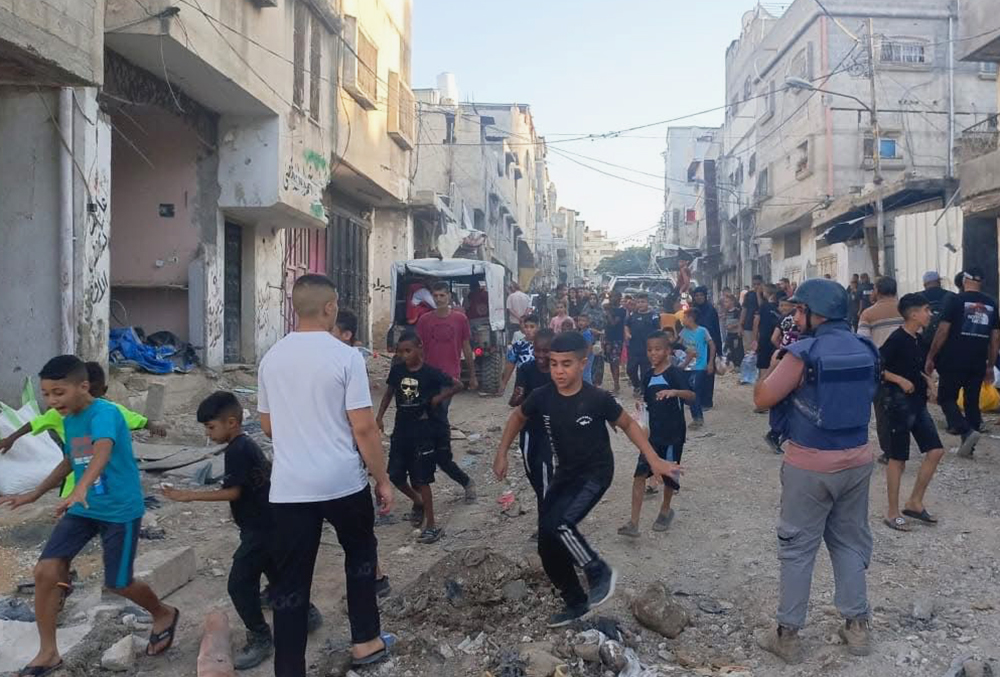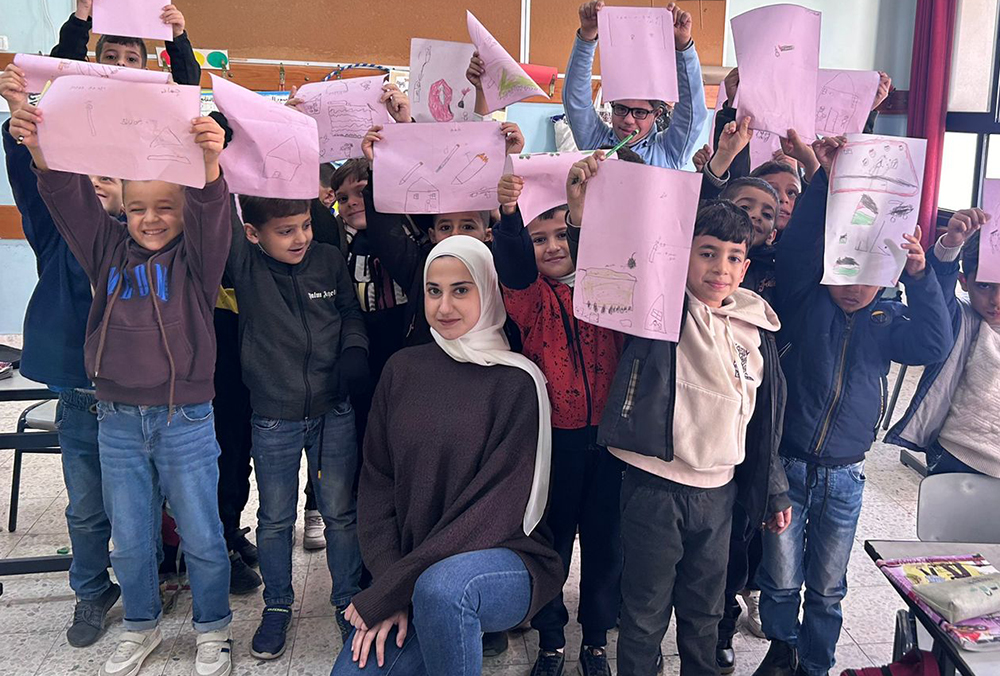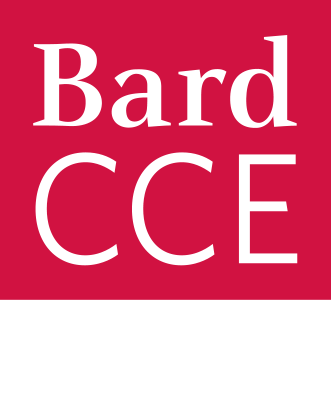From Pain to Power: Global Engagement Fellow Uses Arts Therapy to Help Heal War Trauma of Children in Palestine and Lebanon
Haneen Jarrad works with students in Al Bekaa, Lebanon. Photo courtesy of Haneen Jarrad.
Haneen Jarrad is an Student Global Engagement Fellow majoring in English language and literature at the American University of Beirut. In January 2024, with the support of OSUN and AUB’s Center for Civic Engagement and Community Service, she launched Shield—a conflict trauma support initiative for children in Lebanon and Palestine. To date, the project has benefited over 164 participants across the two countries. Follow Shield on Instagram.
An exceptional birthday
Birthdays are times when most people celebrate with candles, cake, and gifts but my nineteenth birthday last summer was marked by something profoundly different. Instead of being home in Tulkarem, Palestine, surrounded by friends and family, I found myself traveling to Al Bekaa Valley in Lebanon, carrying books, games, and a heart full of hope. The decision to spend my special day there changed everything for me and reinforced my belief in the transformative power of a project born out of my commitment to support children affected by war and trauma.
In Al Bekaa, I conducted therapeutic and educational activities, including art sessions and language workshops, with Syrian refugee children aged 8-15 who were affected by conflict. I found the students to be brilliant, curious, and bursting with potential, yet burdened by memories of a past they could not escape. We played games that fostered trust, organized storytelling sessions to help them find their voice, and painted murals to reclaim joy. While teaching them English and guiding them through therapeutic activities, I saw something extraordinary—a glimmer of resilience shining through the cracks of their grief.
Shield: a bridge to hope
Inspired by my own experiences of displacement and conflict in Palestine, I created Shield to serve as a bridge for children—connecting them to hope, resilience, and healing. Growing up in Tulkarem, West Bank, where I witnessed the effects of military incursions by Israel firsthand, I understood the critical need for a program that provides creative and emotional outlets for children. The real-life stories I’ve lived through and the resilience I’ve witnessed in my community planted the seeds of this project.

A street scene in Tulkarem. Photo courtesy of Haneen Jarrad.
Shield is more than a therapy program; it’s a bridge—one that connects children to hope and healing through creative expression and structured activities. The children it serves, many of whom have experienced the unthinkable, deserve a safe space to rediscover their dreams and their joy, fostering resilience so they can heal and grow. The project demonstrates that creative and educational interventions can play a significant role in rebuilding young lives, even amidst ongoing challenges.
My 2024 birthday stood out, not because of any celebration or gifts I received but because of what those children gave me. They reminded me why I started Shield in the first place. It wasn’t just a program; it was a mission. Earlier in the year, I presented the project at the OSUN Get Engaged Conference in Berlin, a platform that allowed me to amplify its message and refine its scope. The conference brought together student leaders from across the globe, each driven by their unique civic engagement projects, and it showed me the power of collaboration. As a Student Global Engagement Fellow, I’ve learned that leadership is not about standing at the forefront but about creating spaces where others can thrive. Shield embodies that ethos.
A project takes root and expands
My time in the Bekaa Valley solidified my resolve to push Shield further, beyond political borders and all kinds of barriers. However, life had its own plan. Shortly after implementing Shield in Lebanon, I was forced to flee the country due to escalating tensions. I returned to Palestine, seeking the solace of my family in Tulkarem. Yet, even there, safety was an illusion.

Haneen Jarrad poses for a group portrait with her students in Tulkarem, West Bank. Photo courtesy of Haneen Jarrad.
The day my flight took off from Beirut, my heart ached as if torn in two. None of it felt real—it was as though war was following me wherever I went. The chaos, the displacements, and the uncertainty weighed heavily on me, but they also fueled my determination.
Once in Tulkarem, I realized Shield was always meant to begin there, in my hometown. But implementing it was no easy feat. Borders, checkpoints, and the suffocating restrictions of Israeli occupation stood in my way. Still, I persisted. Through sheer resilience and the support of local educators and volunteers, I brought Shield to schools severely affected by recent wars. Eventually, the program took root in Tulkarem and Nur Shams refugee camps, where children carried stories of loss that mirrored those I’d encountered in Al Bekaa Valley. The project has now benefited over 164 participants across Palestine and Lebanon.
Looking back, I see that Shield’s story is as much about the children it serves as it is about the communities and individuals who have shaped its journey. From the Syrian refugee children in Al Bekaa Valley to the resilient youth in Tulkarem and Nur Shams, every step has been a testament to the power of persistence and shared humanity. The murals we painted, the stories we shared, and the connections we built have shown me that even in the darkest places, light can be found.
I hope to continue expanding Shield’s reach, integrating it into more schools and community centers in the region, and perhaps even publishing resources that others can use to replicate its model. For now, though, I am reminded of those murals we painted in Al Bekaa and Tulkarem—vivid, hopeful, and brimming with possibility. That’s what Shield stands for: a chance to turn pain into power and adversity into art.
And as for my birthday? It’s a reminder that sometimes, the greatest gifts are not the ones you receive but the ones you give.
Follow Shield on Instagram.
Post Date: 01-07-2025
